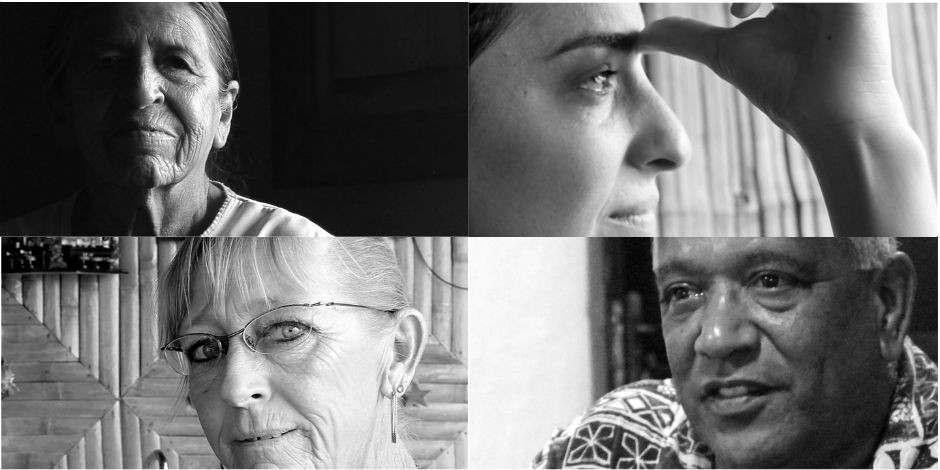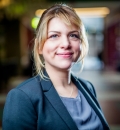Lea Kabiljo is a doctoral candidate in the Art Education program at Concordia, having obtained her Bachelor and Master's degrees from the same department. Prior to returning to Concordia to pursue her PhD she worked as a high school teacher and was the executive director of LOVE: Leave Out Violence, a leading non-profit organization in violence prevention for youth.

I’ve always loved stories.
When I was young, my favourite thing in the world was to sleep at my grandmother’s house. Late into the night, she would tell me stories about her childhood and youth. Listening to her, I felt transported into a world I never knew, a world very different from the one that was surrounding me at the time.
The small town where my grandmother lived, through my eyes of a child from a large city, was the most boring and uneventful place in the world. But in the stories from her past, the town was once full of life. Through my grandmother’s stories, I was able to picture her life as it once was. Some of the stories made me laugh and others left me feeling sad.
Through them I learned a lot about my grandmother and my family. But I also learned much more than that. Through my grandmother’s memories, I learned history.
Many years later, while in graduate school at Concordia, I took part in a seminar in oral history methods. Here, I understood that without ever calling it by its name, ever since those nights I spent as a child listening to grandmother’s stories, oral history seems to have always been present in my life, professionally and personally.
As I related my own experiences to oral history, I began to recognize its organic and fluid nature. Easily adapted to and integrated across various disciplines, I understood that oral history is part of life itself.
I became especially interested in the notion of shared authority that is the cornerstone of oral history. Shared authority challenges the notion of power between the interviewer and the interviewee as it recognizes equally the expert authority of the researcher and the experiential authority of the interviewee.
In the words of famous oral historian Alessandro Portelli, “oral history conveys the sense that history does happen to people like us in everyday places and contexts.”1 Whether one interviews a family member or a survivor of genocide, oral history allows us to realize that everyone has a story to tell.
While oral history typically emphasizes the interview process, what happens to the information after the interview is equally important. Renato Rosaldo writes that “oral history involves telling stories about stories people tell about themselves.”2
As an artist and a teacher, I had to ask myself what happens when we use art as a means of telling stories about stories that people tell about themselves.
From an art education perspective, using oral history as stimuli for the creation of art encourages students to engage in meaningful and thorough research for their artistic creation. Students are encouraged to approach the project as a whole so that the art making is perceived not as a mere illustration of the interview but as its extension.
What’s more, considerations of shared authority are integral to the art-making process. This adds another layer of complexity, as the students not only confront aesthetic decision-making but also the ethical implications of representing someone else’s story with respect and dignity.
The objective of my current research is to advance the practical application of oral history as pedagogy for art education. Specifically, I am developing a multidisciplinary curriculum model intended as professional development for practicing teachers and educators.
This curriculum focuses on the development of skills that are essential for the teaching profession: active listening; sharing of the authority; recognizing and understanding the experience of others; and representing others with respect and dignity. I sincerely hope that the greatest significance of my research is in its potential practical application as this curriculum targets teachers and educators, those who educate and influence our next generation.
We live in a world where hate, intolerance and bigotry are propagating at an alarming rate. It is therefore essential to provide our current and future educators with concrete learning opportunities that foster and encourage the recognition of our common humanity.
By exposing teachers and educators to a pedagogical method that promotes listening, empathizing and understanding, I hope that we can initiate a process that will enable those teachers and educators to practice and cultivate those skills in their classrooms with their students. Our future just might depend on their success.
References
1. Portelli, A. (2006). Foreword. In Preparing for the next generation of oral historians. Blue Ridge Summit: Rowman & Littlefield
2. Rosaldo, R. (1980). Doing oral history. In Social Analysis: The International Journal of Social and Cultural Practice, (4), 89-99.
About the author


